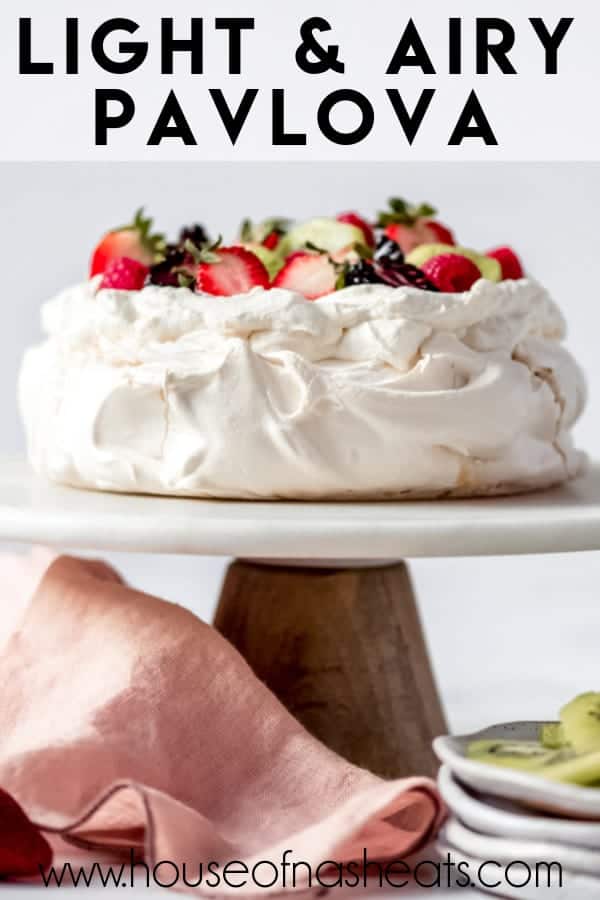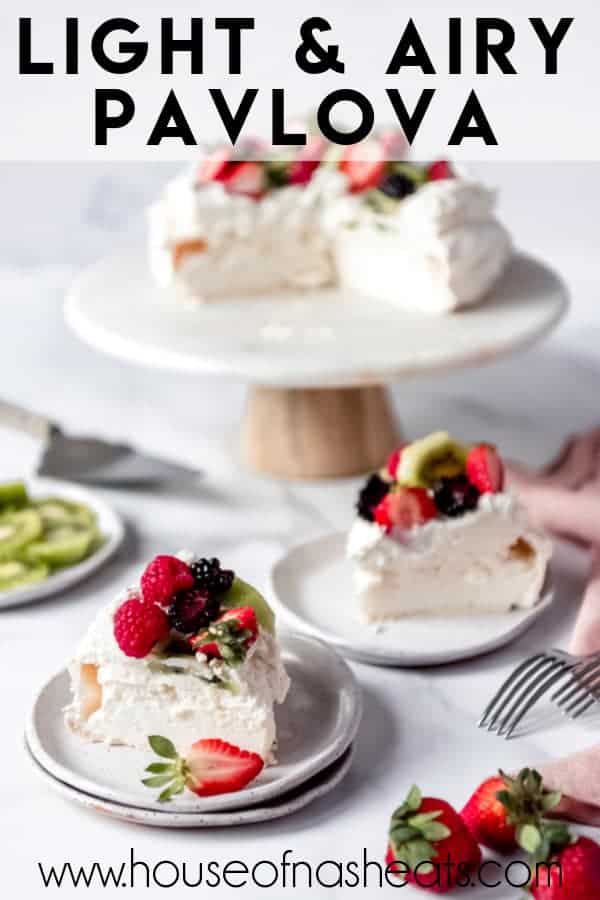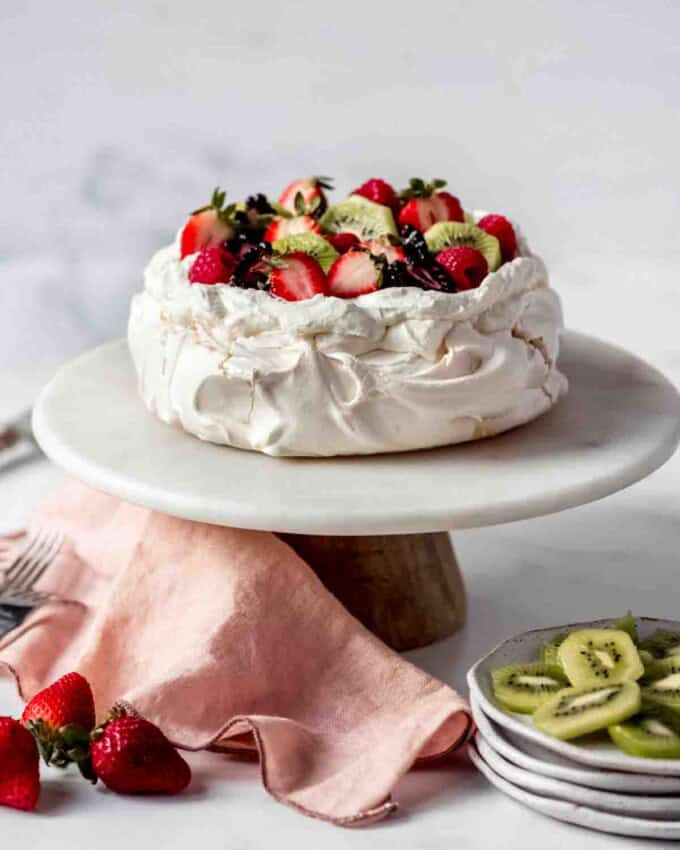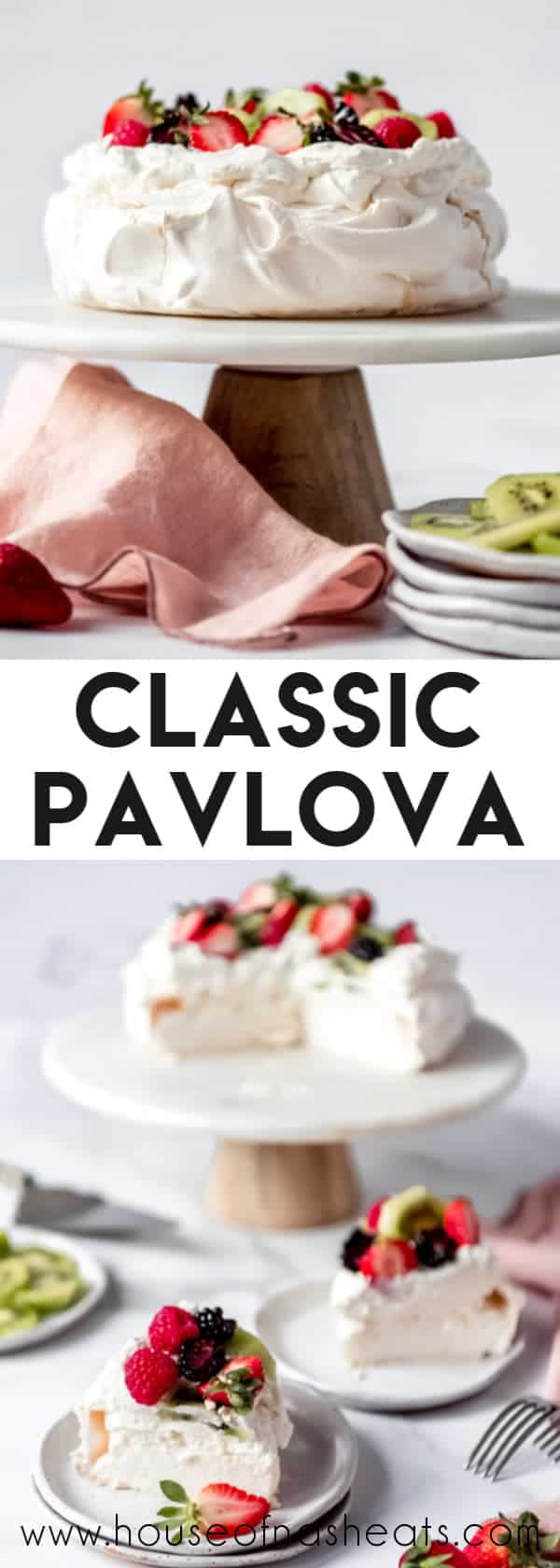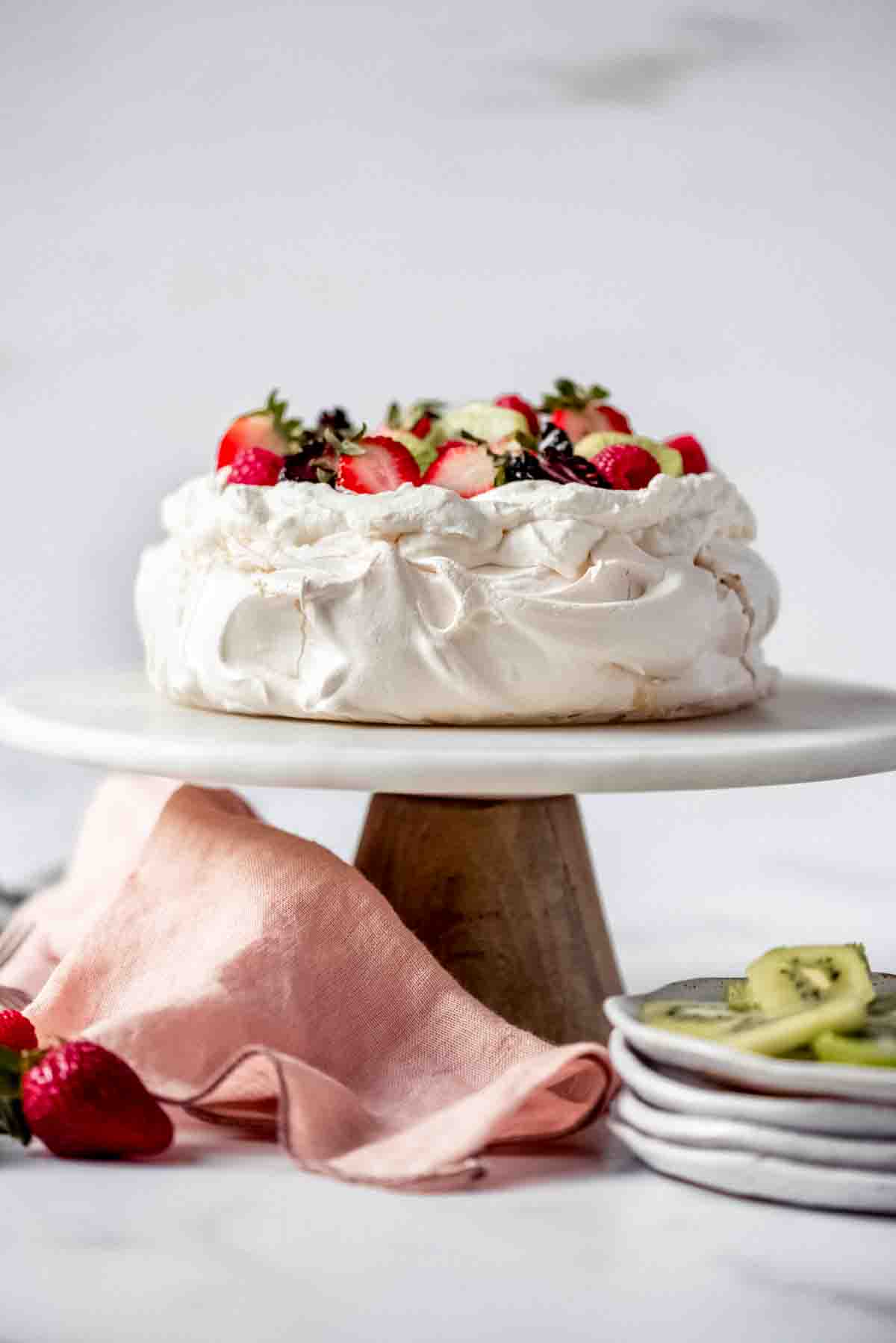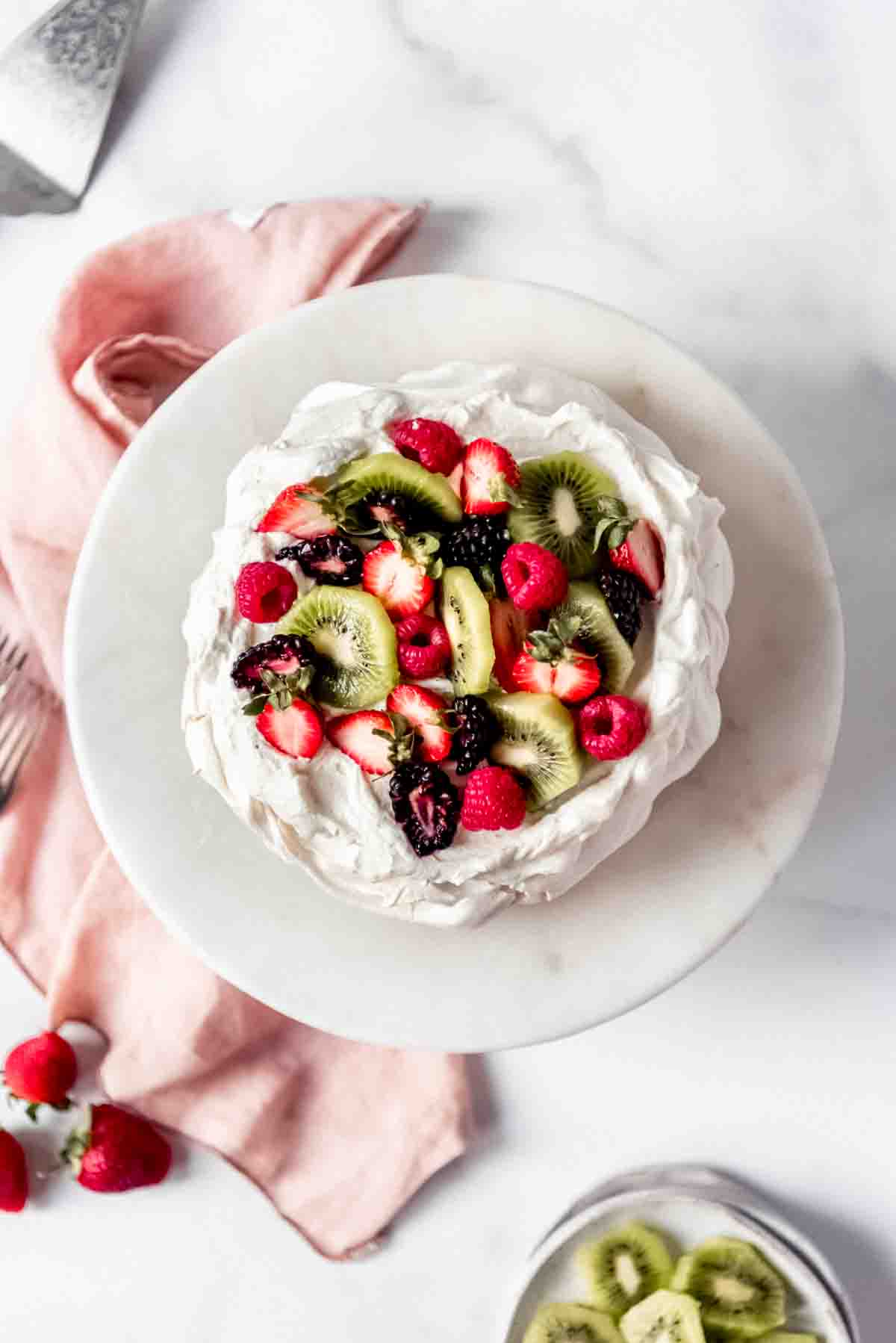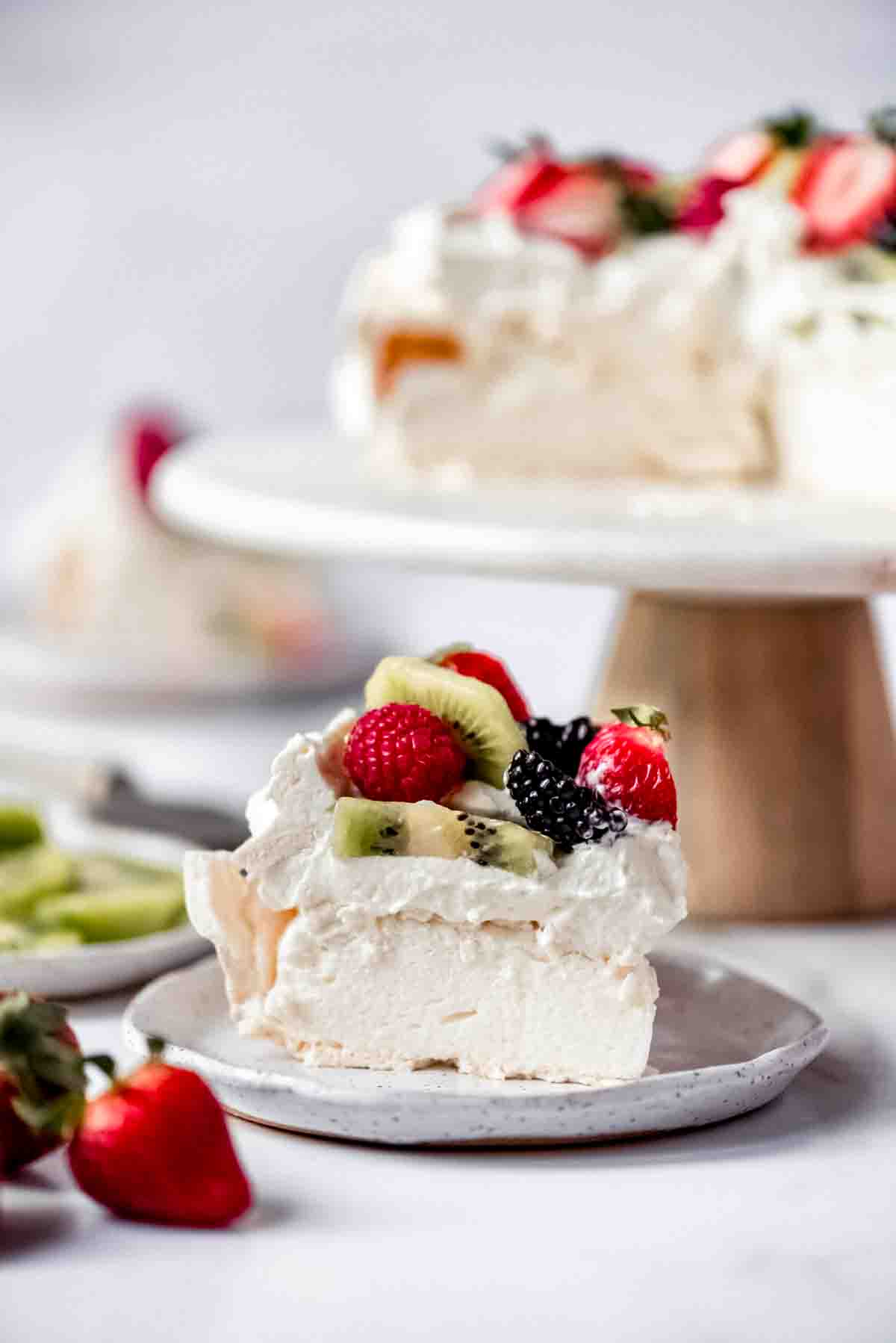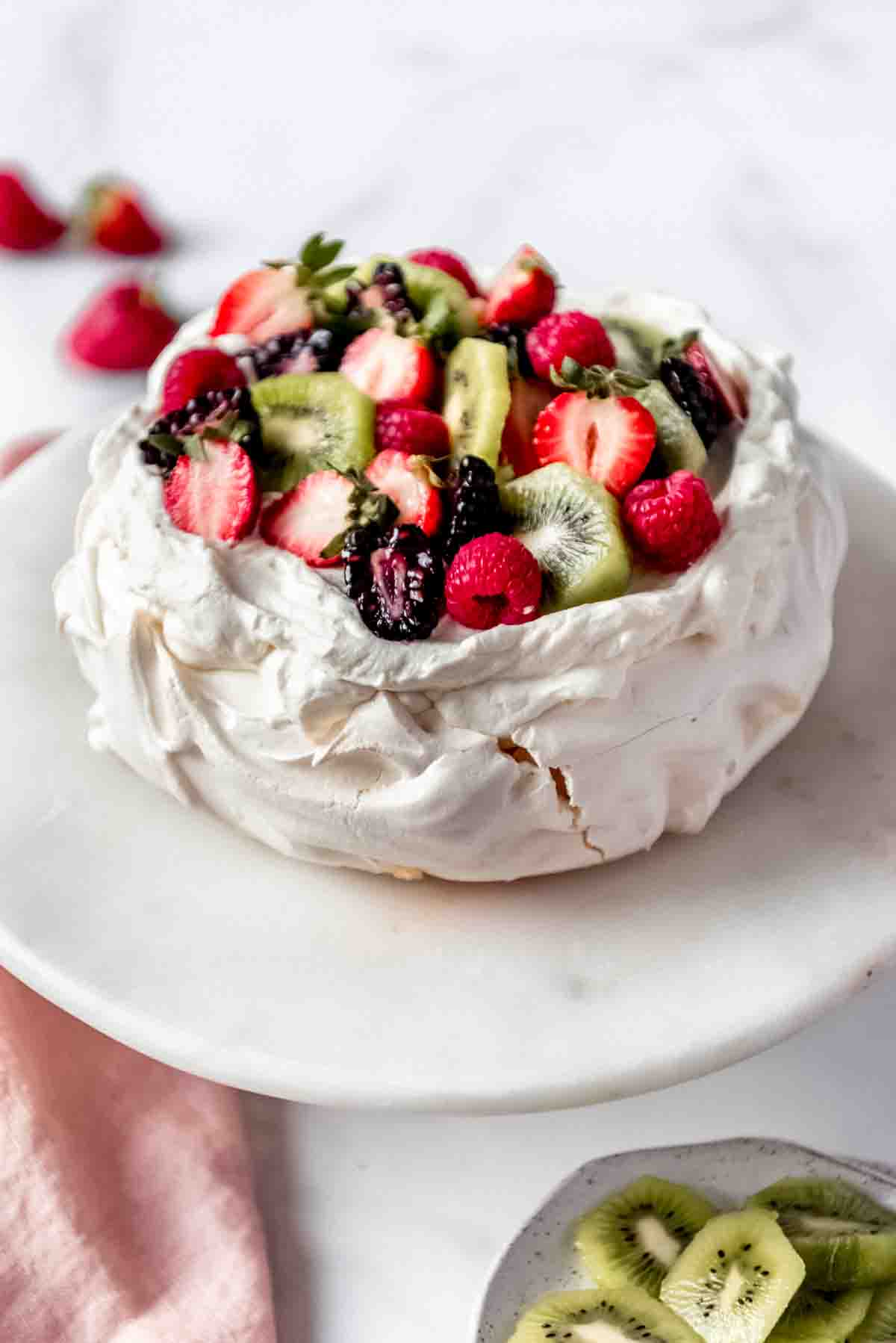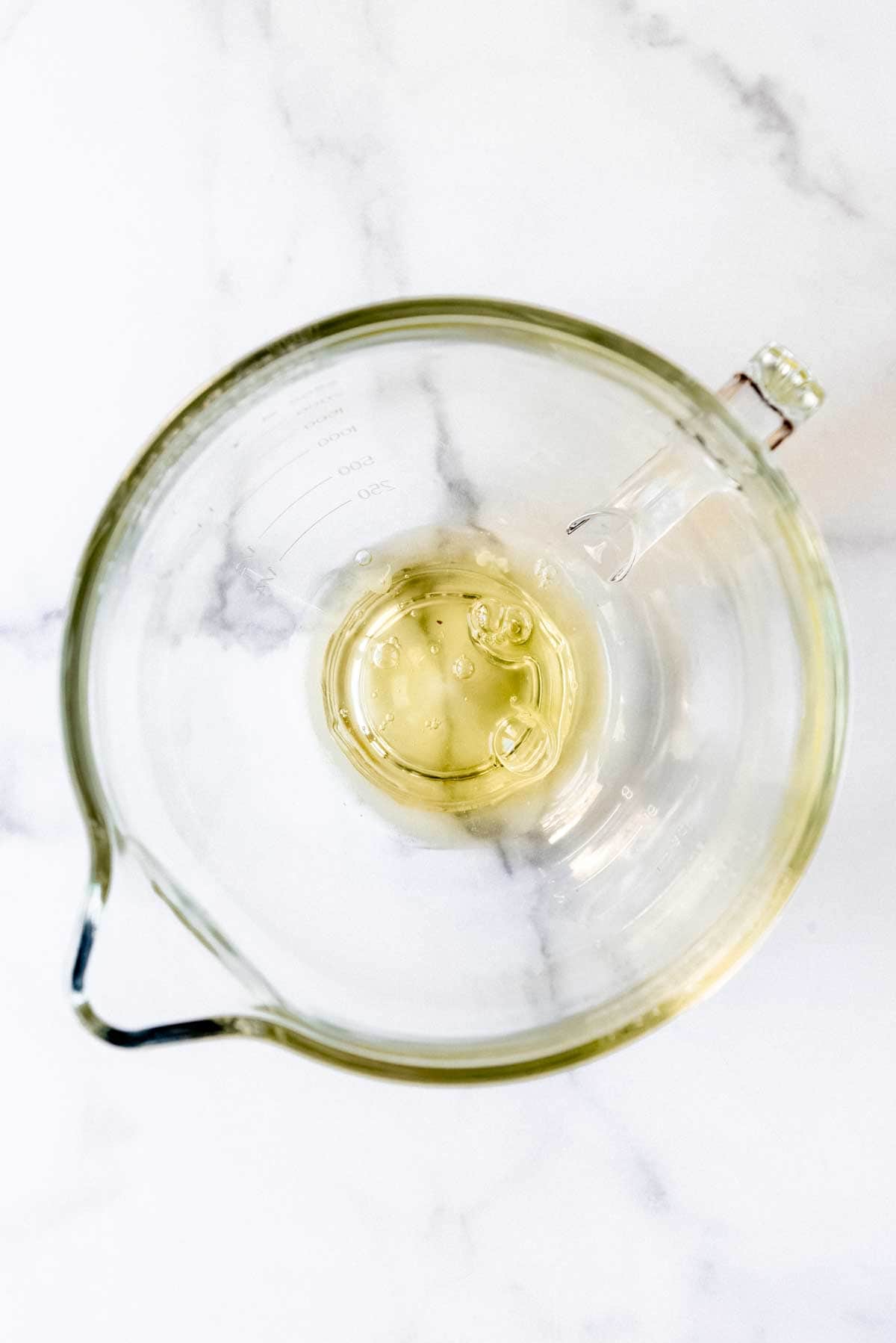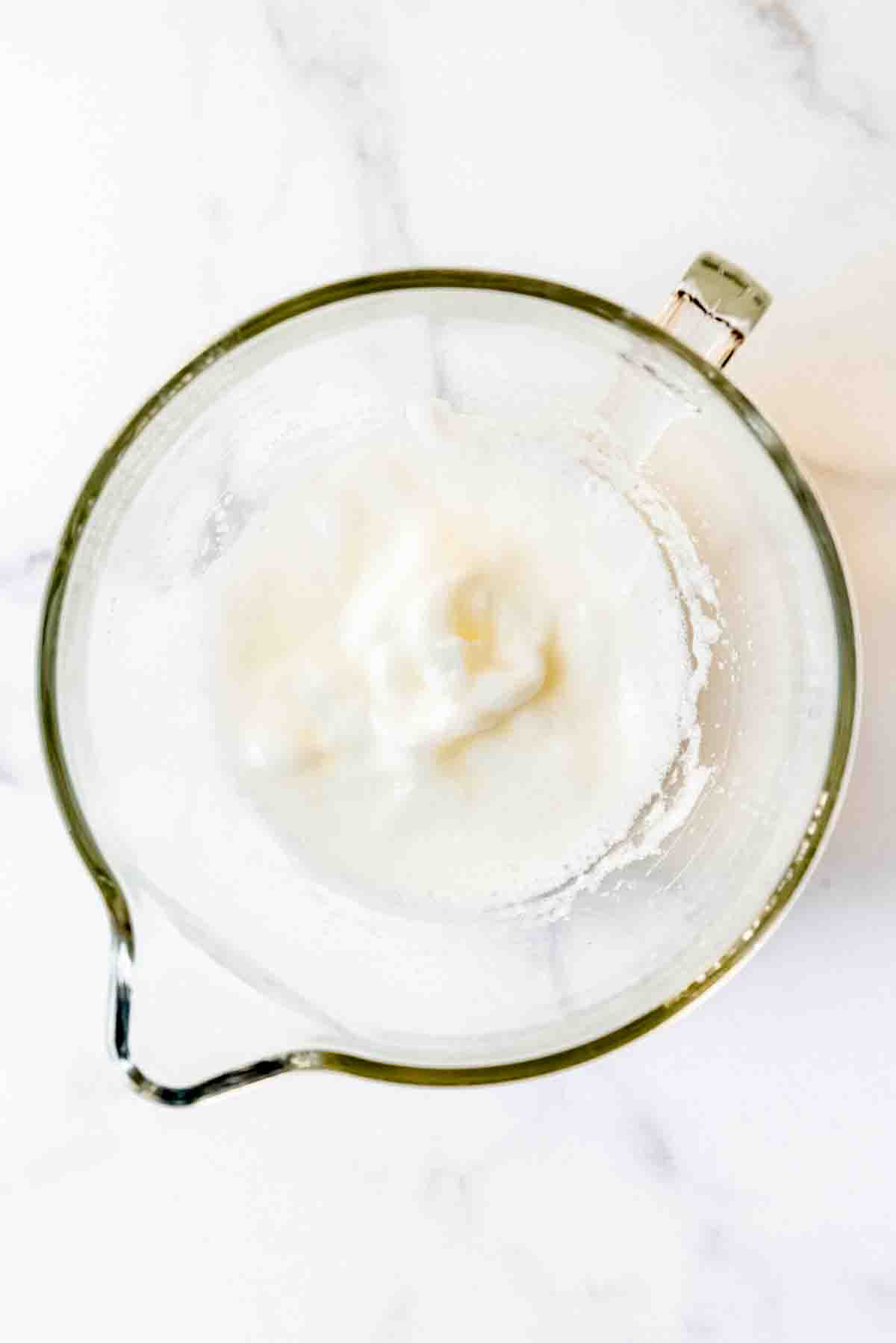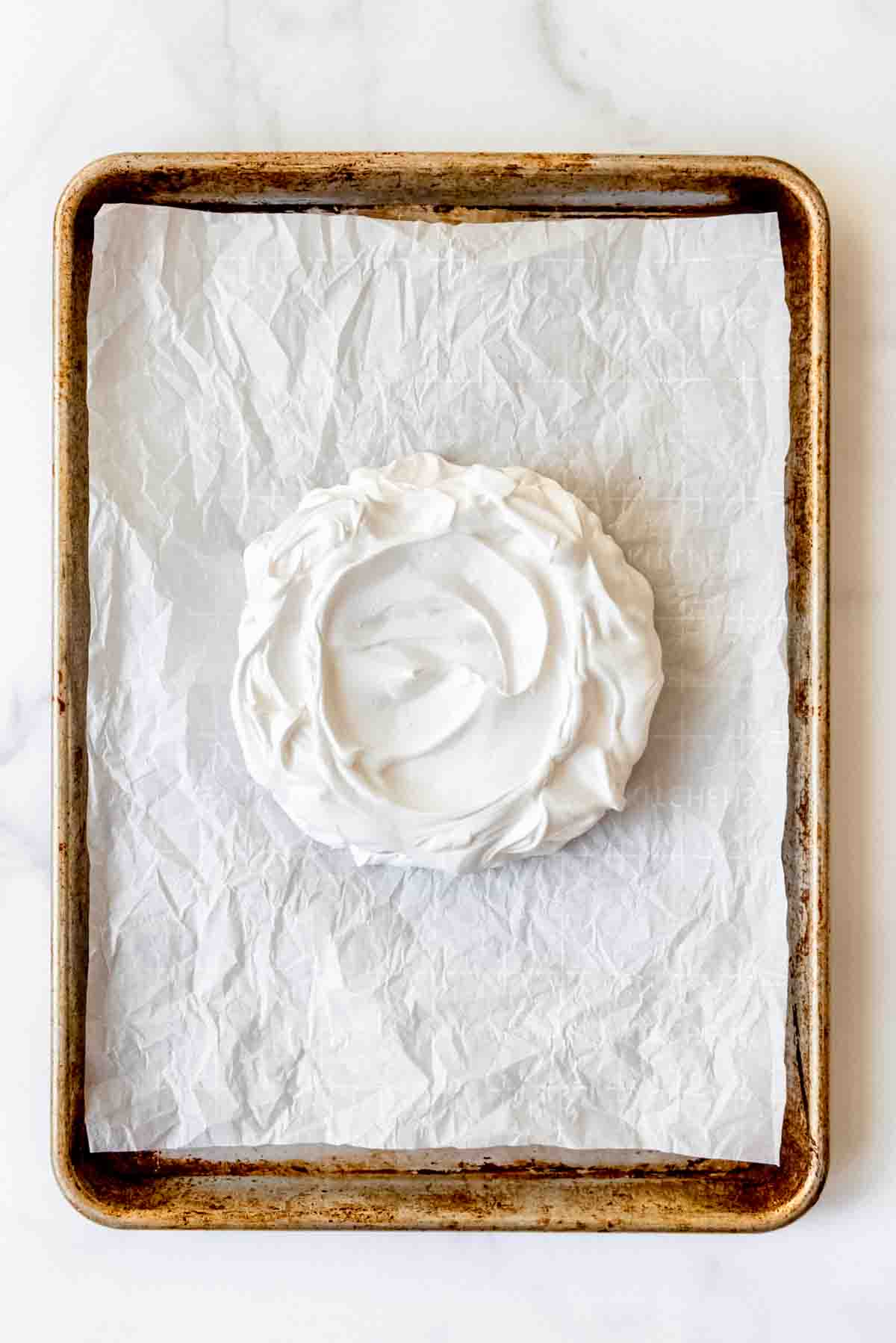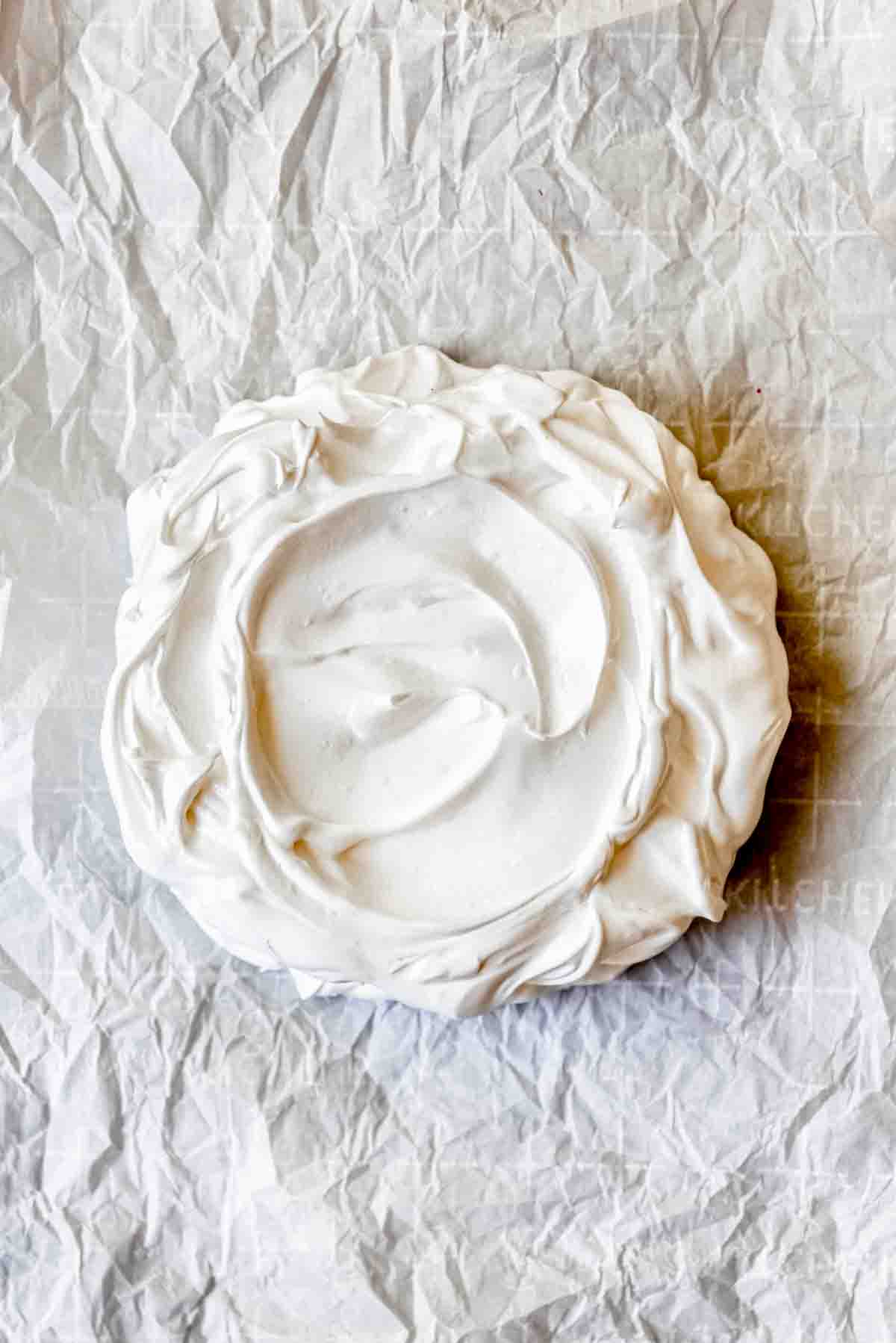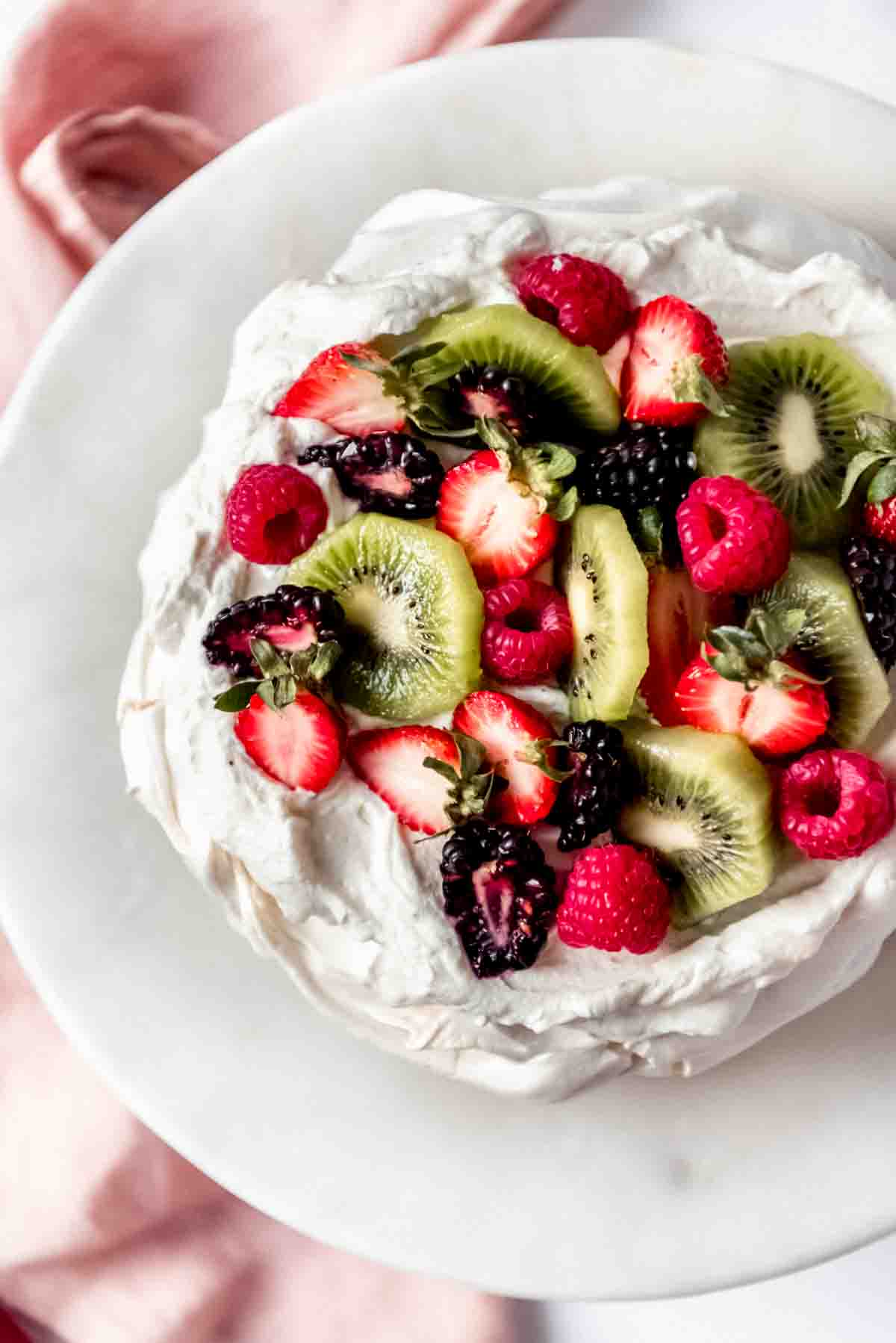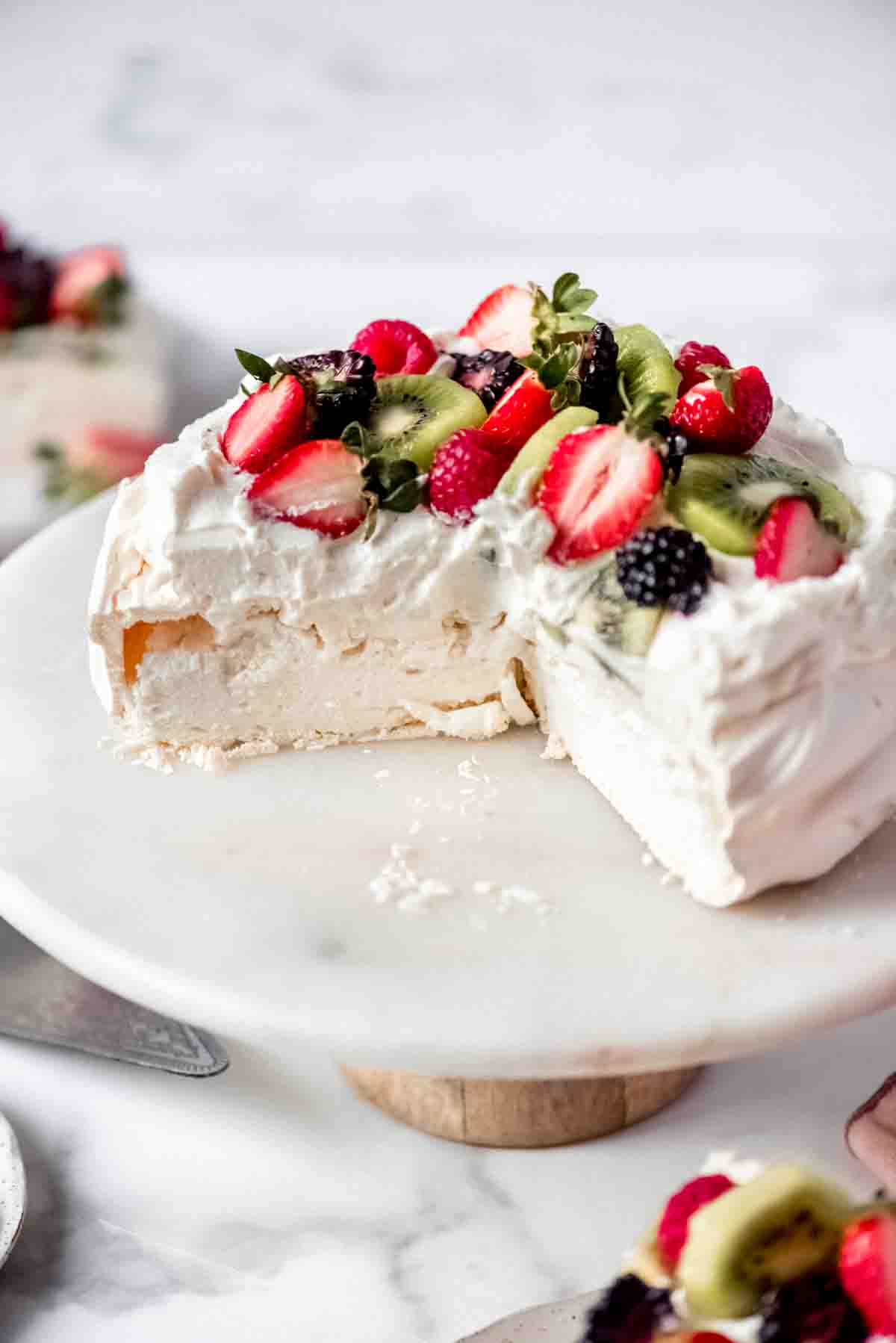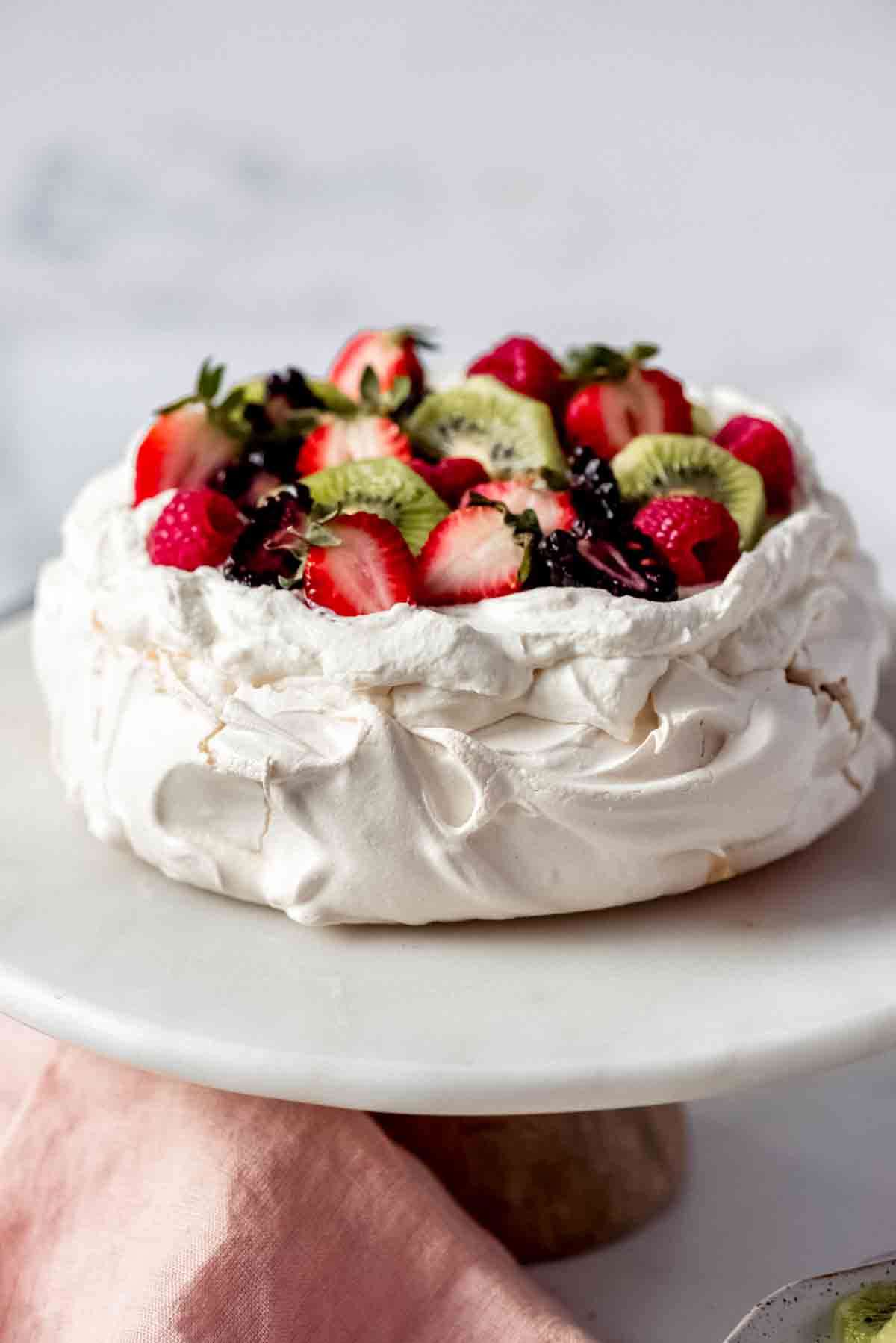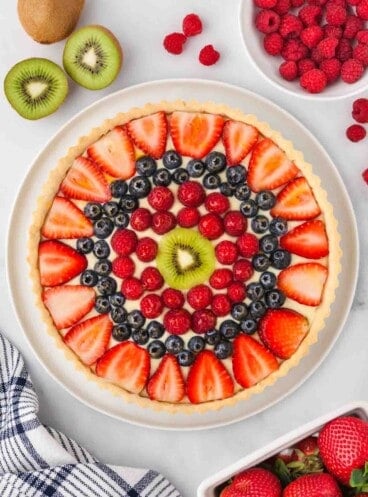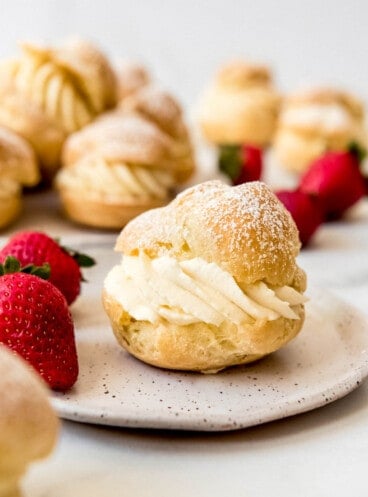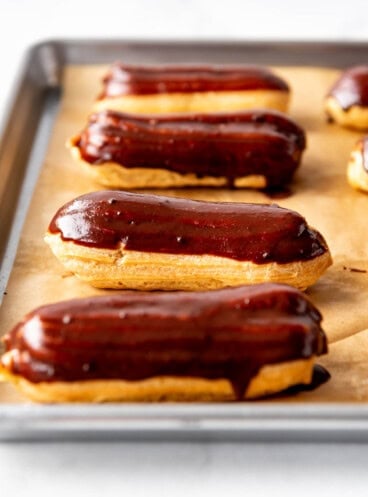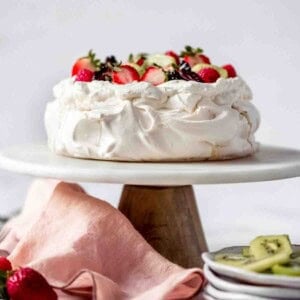Classic Pavlova Recipe
Our family recently visited New Zealand and I looked everywhere for Pavlova, hoping to get an authentic slice. But not one single bakery or restaurant on the south island that I visited had it! The closest dessert I found was eton mess, and that’s not the same at all. So I came home and baked my own! I have actually made pavlova a few times in the past but it’s still always a delight to open up the oven after hours of a long, slow cooling process to find a beautiful cloud of crunchy meringue shell filled with soft marshmallow filling just waiting to be piled with cream and fresh fruit! You can make chocolate pavlova too! It’s on my constantly-growing list of desserts that I want to try! Although to be completely honest, I think it would be difficult to photograph given it’s shocking resemblance to a cow pie. But a bright white classic pavlova like this one topped with jewel-colored fruit? It’s every bit as divine as it looks. My entire family gushed enthusiastic praise over this dessert. If you are a fan of fruity spring or summer desserts, you will also enjoy our Authentic French Fruit Tart, Raspberry Pretzel Salad, or Easy Blueberry Custard Pie!
What is Pavlova?
A pavlova cake, as it’s sometimes called, is like a cross between a meringue cookie and a homemade marshmallow. It’s made with egg whites, sugar, cornstarch, vinegar or lemon juice, and vanilla. After beating the whites until frothy and very gradually adding the sugar until it is dissolved, a slurry of the remaining ingredients is whisked in before baking the meringue slowly in a low temperature oven, then letting it cool gradually. The pavlova dessert was named for Anna Pavlova, a Russian ballerina who performed in Australia and New Zealand in the 1920’s. The question of which country created the first pavlova recipe is supposedly hotly contested between the Aussies and the Kiwis. Some say it was inspired by Ms. Pavlova’s tutus or her light and graceful style of dance. But another article discredits both New Zealand and Australia with claims that the recipe originated in Germany, was transformed in the U.S., and made it’s way to the southern hemisphere in the form of a recipe on the back of a cornstarch box!
How to Make Pavlova
How to top Pavlova
Whipped Cream: I like it sweetened with a little powdered sugar and vanilla extract, but you could probably use unsweetened whipped cream since the meringue itself is already quite sweet. Fruit: Strawberries & kiwi are classic choices, but raspberries, blackberries, or blueberries are also excellent choices. You can even use mandarin orange segments, sliced peaches, cherries, mango, or frankly, almost any other fruit you like. Fruit Sauce: Lemon curd, passionfruit curd, mango curd, ANY kind of curd, Easy Raspberry Coulis Dessert Sauce or other fruit compote or sauce would be great toppings. Chocolate: I’m thinking you could drizzle a pavlova with Nutella or pile some chocolate shavings on it and it would be pretty darn amazing. Sprigs of mint: I would probably do this more as a garnish than as something I would eat, but it would certainly be pretty!
Tips for the Best Pavlova
Don’t use cold ingredients. Use room temperature, fresh eggs for the best results. It really does make a difference when making a meringue dessert to have eggs that aren’t super cold from the fridge. You will get better volume and texture in your pavlova this way. Make sure your bowl and whisk are clean. Grease in your bowl or on the whisk can cause the egg whites not to increase in volume. Also, be careful not to accidentally get egg yolk in with your whites when separating them. Use parchment paper. It’s really important to use parchment paper, otherwise the pavlova will stick to the pan. And don’t use any cooking spray! I didn’t have a problem peeling my pavlova off the parchment paper, but if you are worried you can dust it with a light dusting of cornstarch first. Assemble right before serving. Don’t top it with whipped cream and fruit until right before you are ready to eat it! A big part of what makes a pavlova so unique and fantastic is in the texture of crispy outside and soft, fluffy interior. But once you add the cream it starts to soften that outer shell. Even 20 minutes is enough to lose the crispiness of that top layer. Can be made in advance. Pavlova doesn’t freeze well, but you CAN make it up to 3-4 days in advance and store in an airtight container at room temperature. Family-style or mini—you choose! You can make one large pavlova, or 4-6 individually sized pavlovas. Just decrease the bake time to about 35-40 minutes.
More Show-Stopping Dessert Recipes
Raspberry Chocolate Tart Raspberry Rose Macarons San Jose Burnt Almond Cake Meringue Cake
Adapted from All Recipes.
French Fruit Tart
Easy Classic French Cream Puffs
Classic Homemade Eclairs
Let me know what you thought with a comment and rating below. You can also take a picture and tag me on Instagram @houseofnasheats or share it on the Pinterest pin so I can see.
